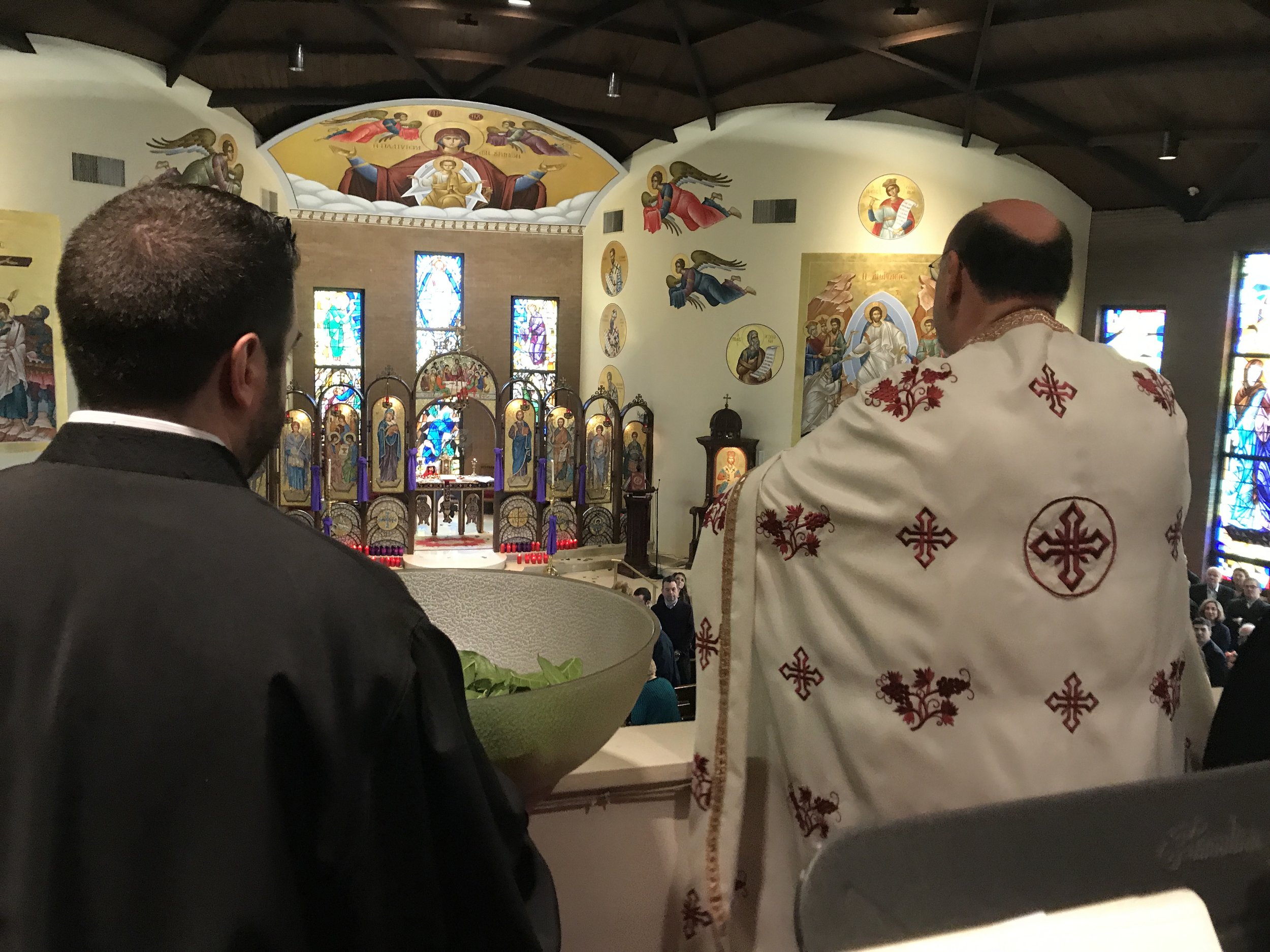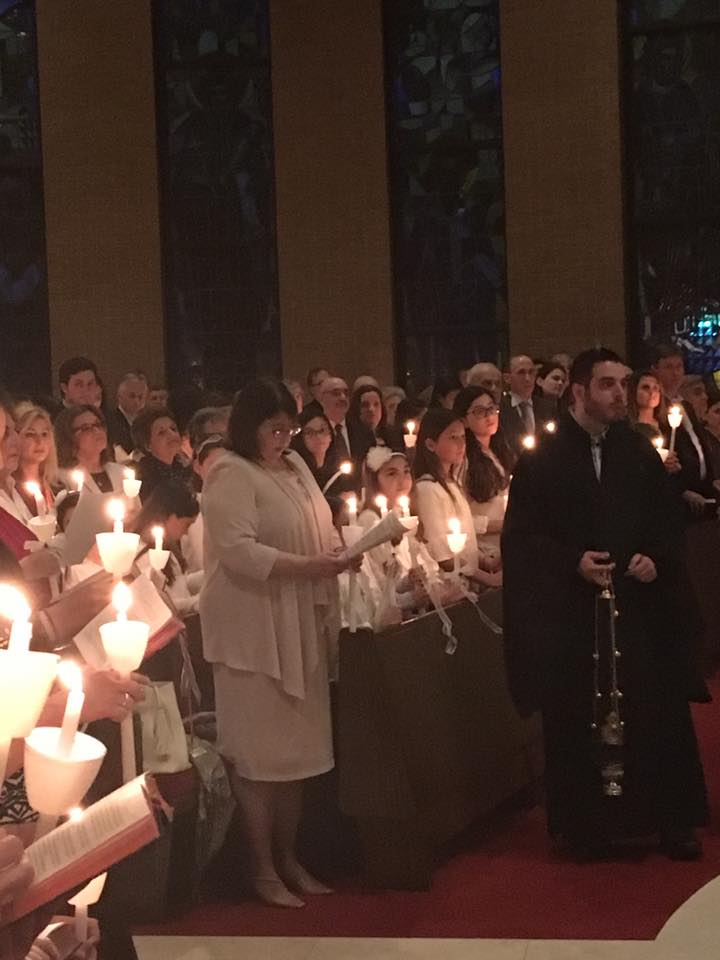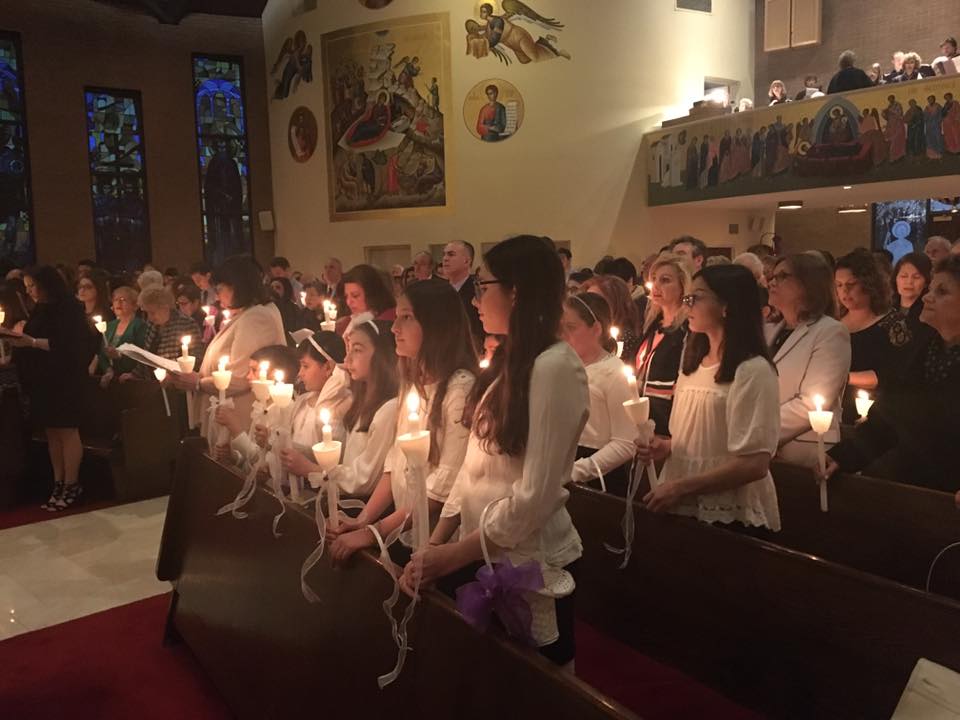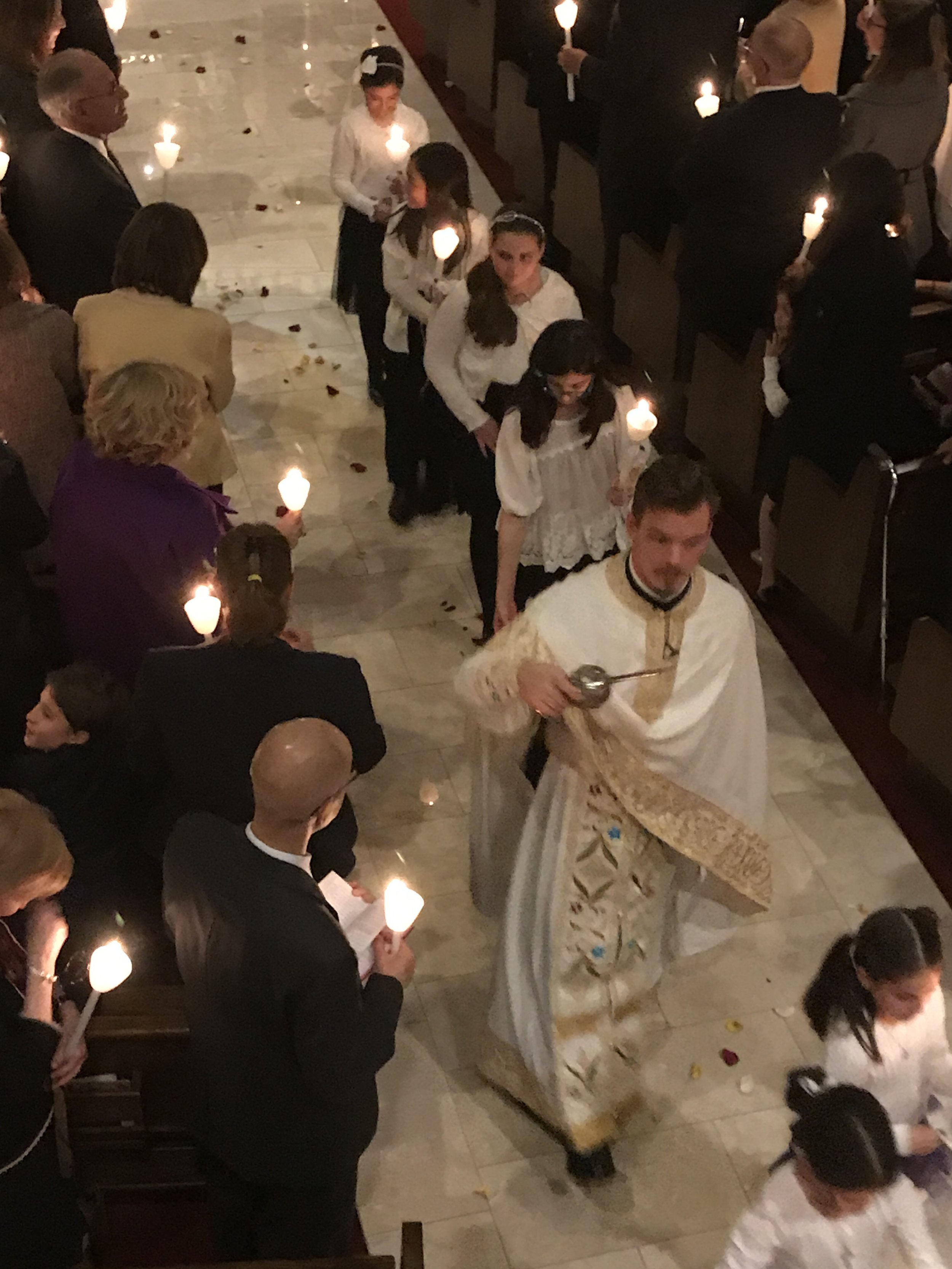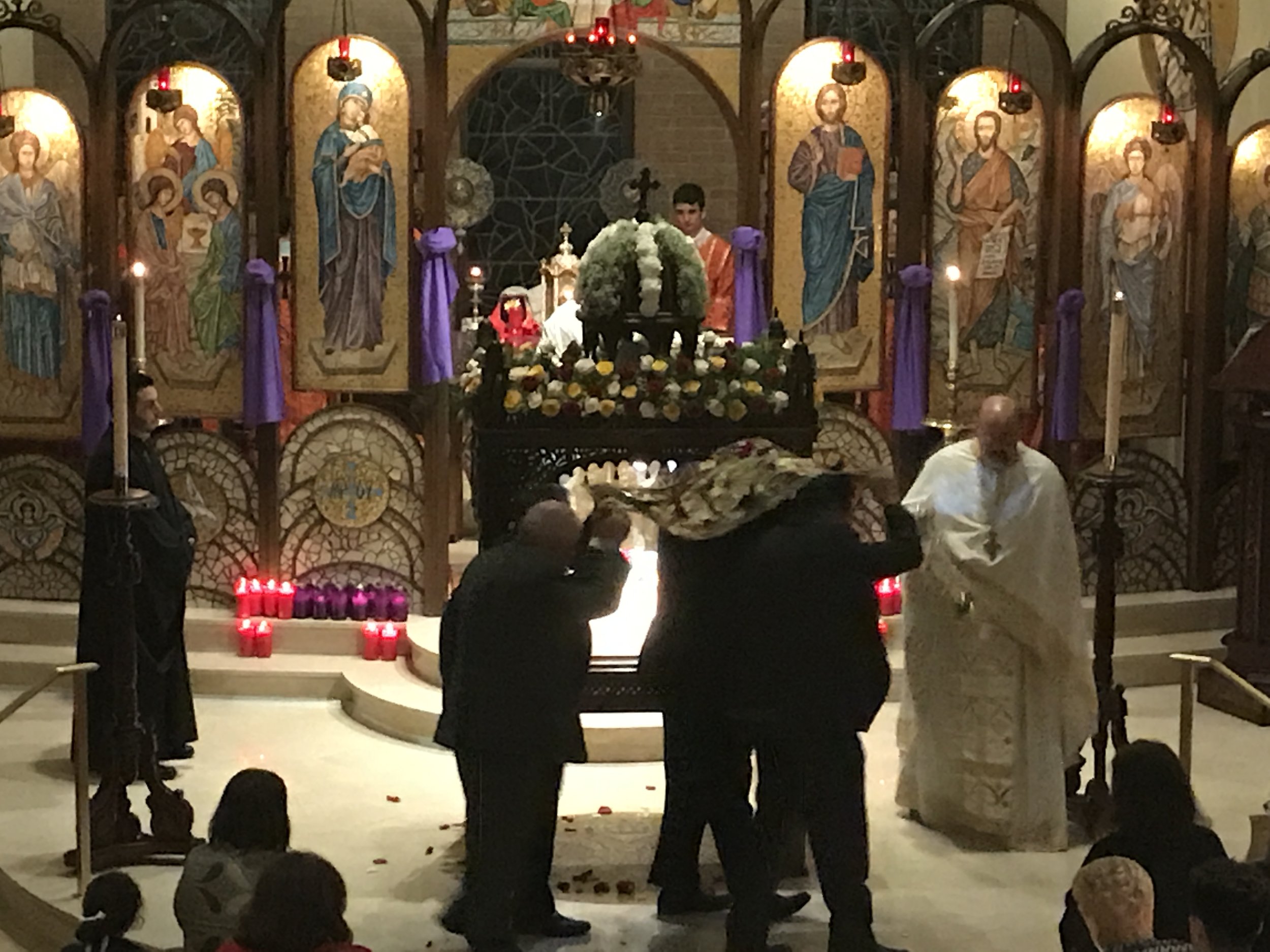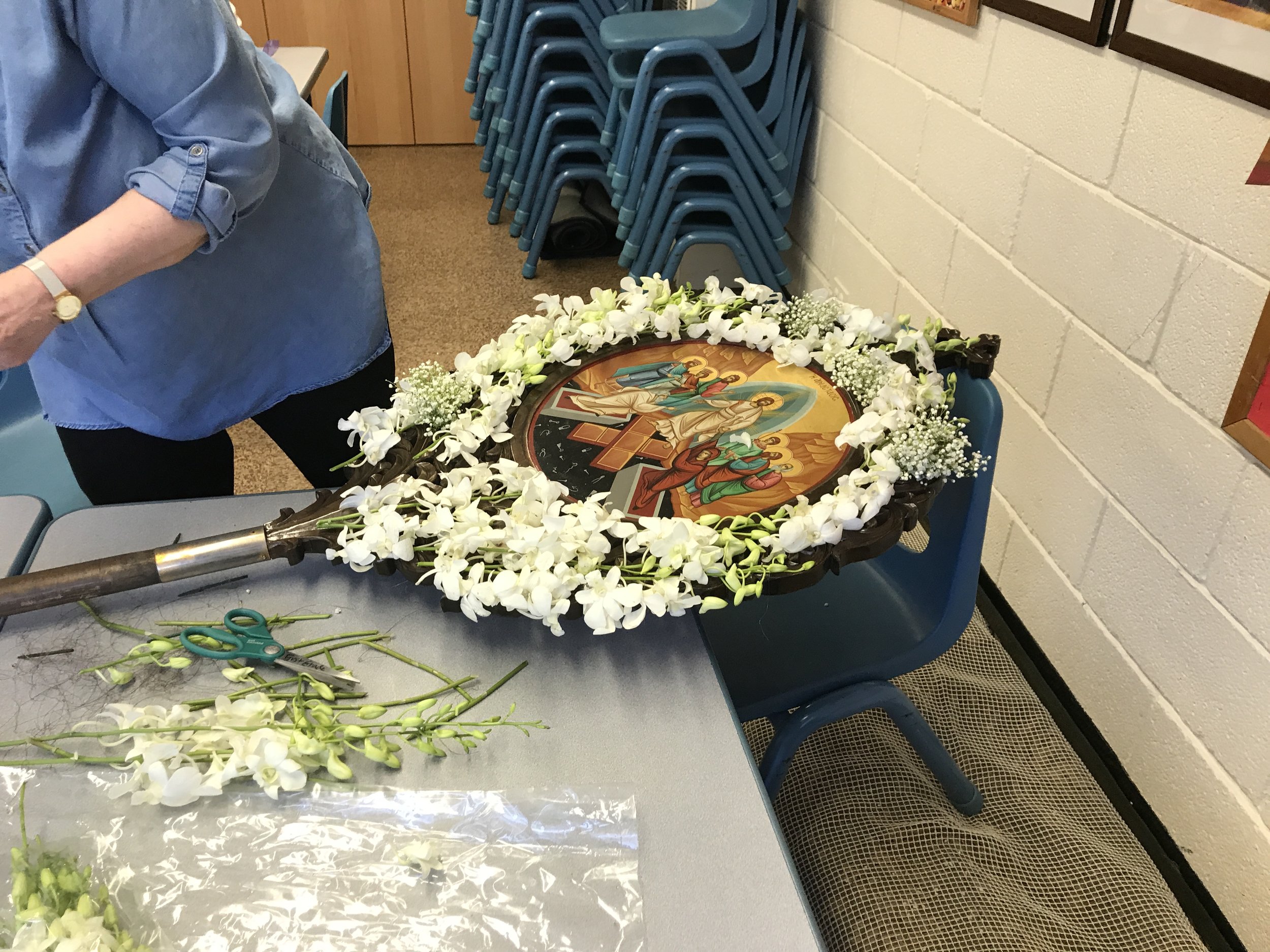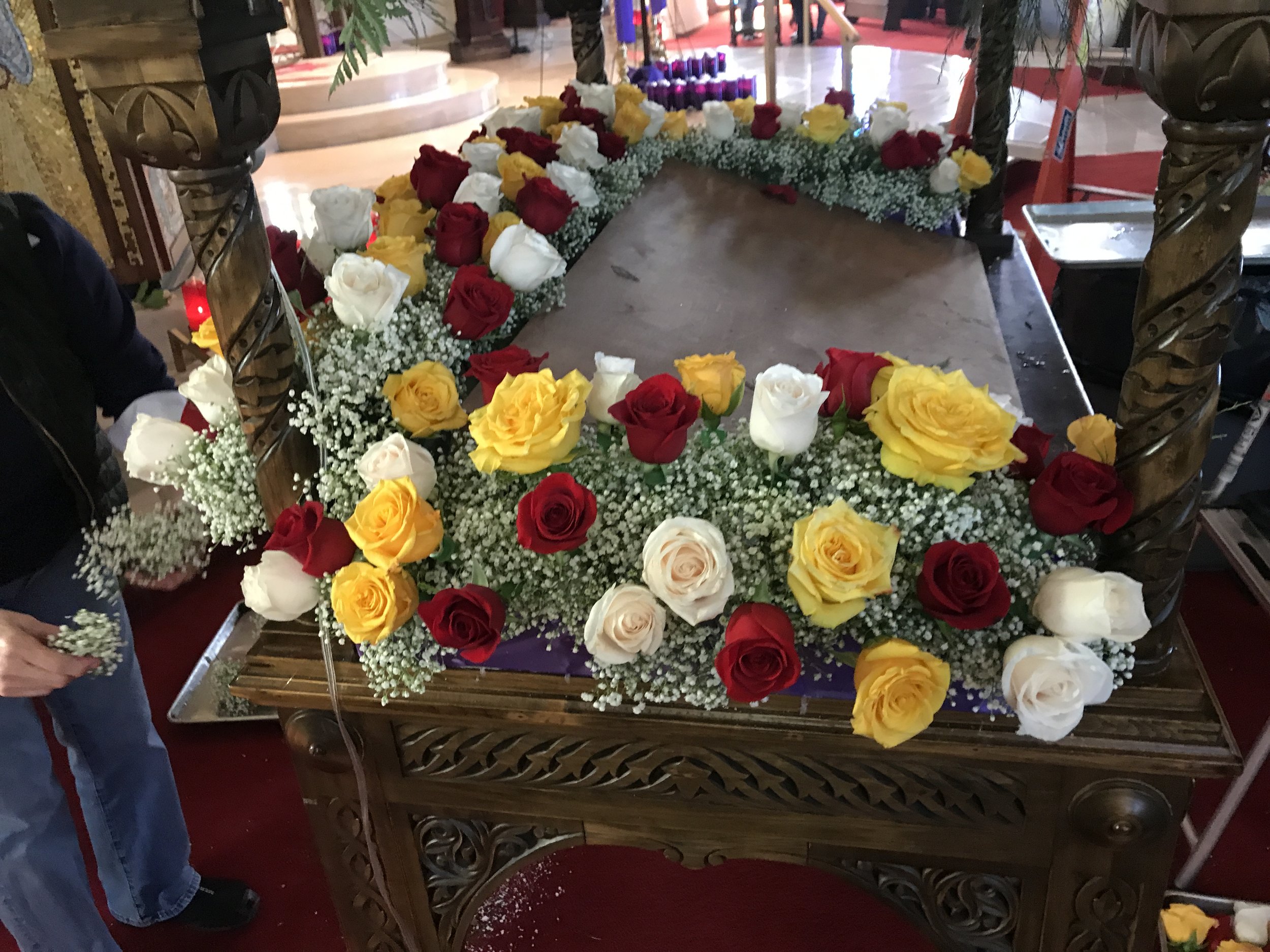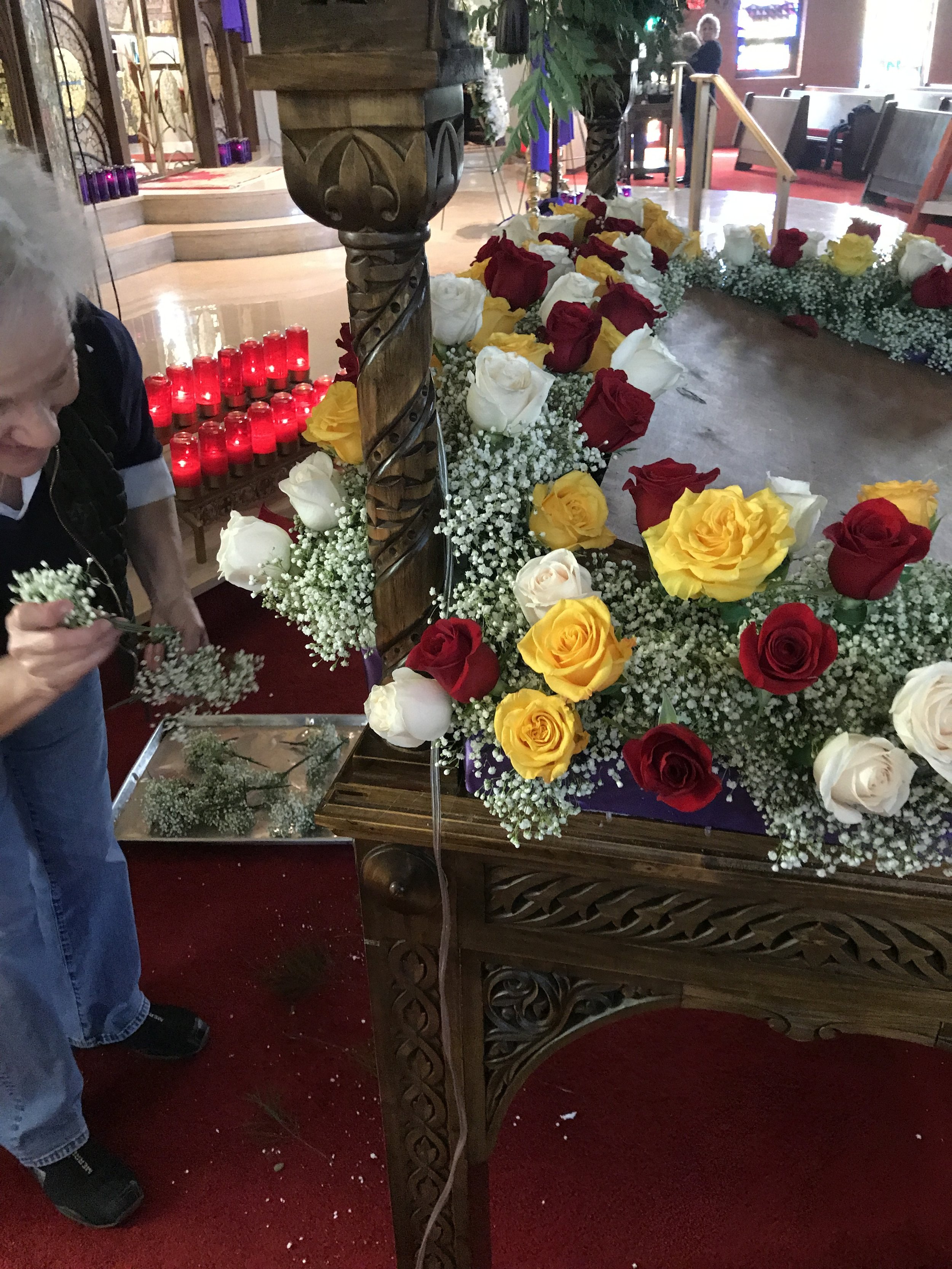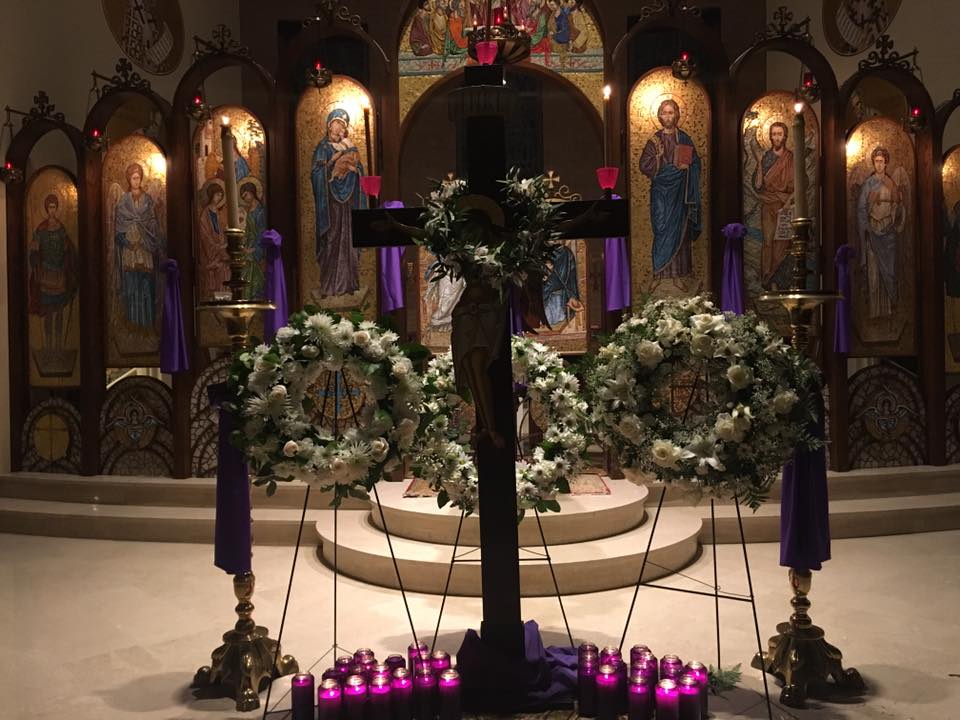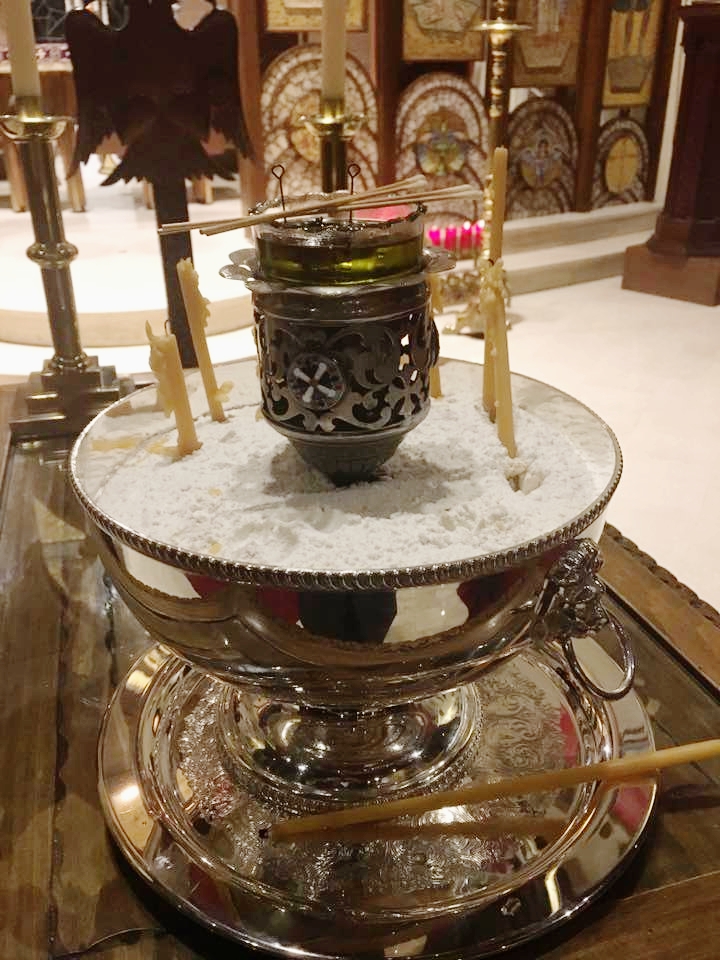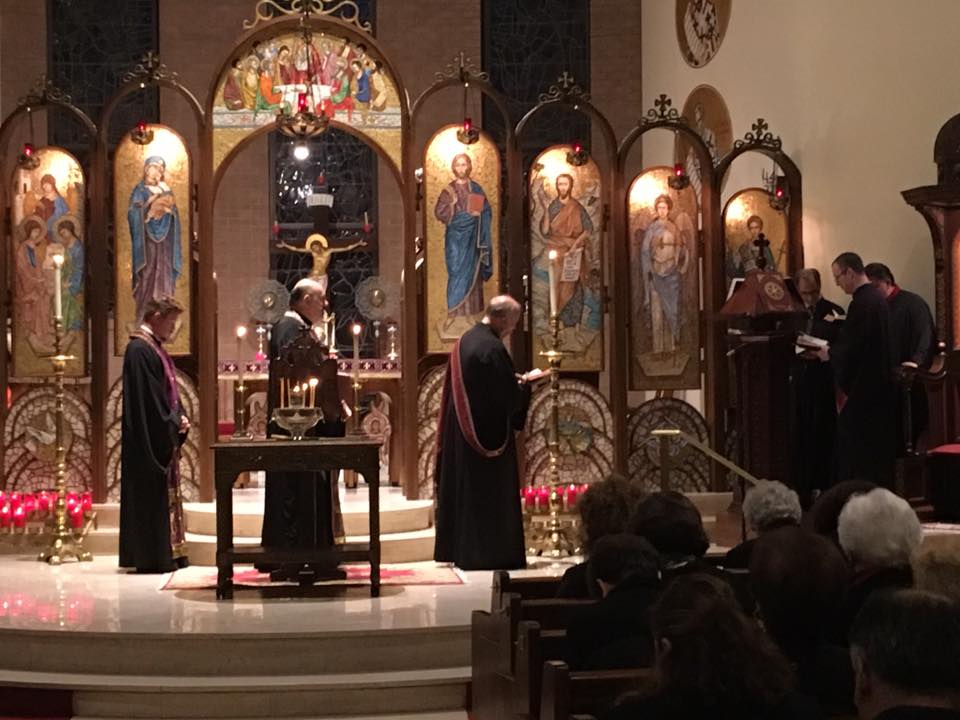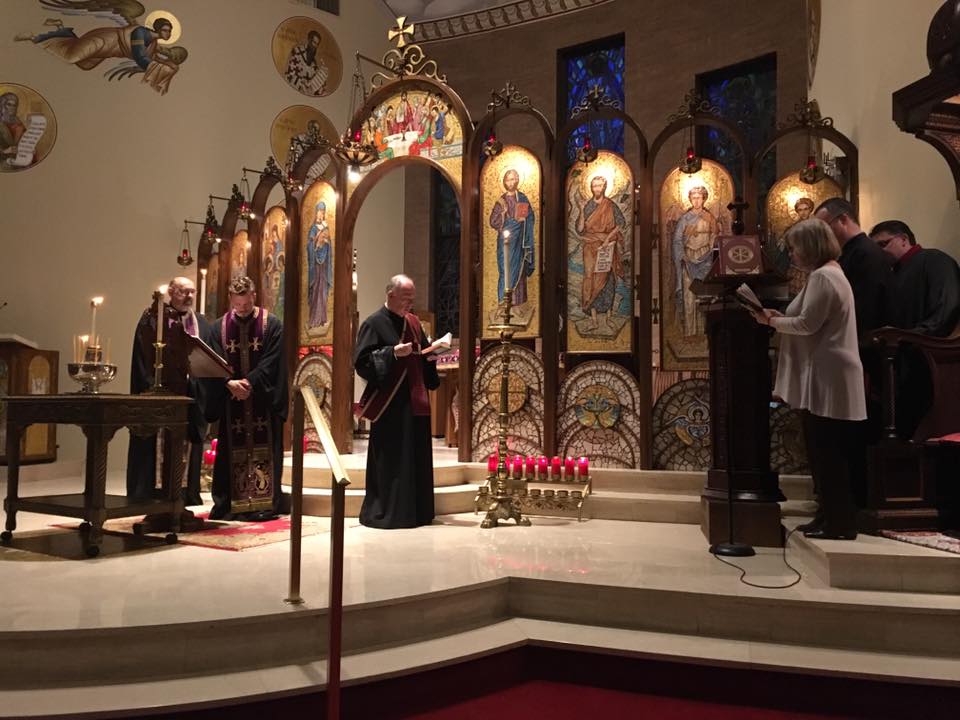Significance of this Service
Source: Goarch.org
"Arise, O God, and judge Thou the earth..."
(The service is Vespers and Divine Liturgy of Saturday evening sung by anticipation, on Saturday morning.)
Psalms are read and Resurrection hymns are sung which tell of Christ's descent into Hades. "Today Hades cried out groaning" is the hymn's description of the resurrection of Adam and the conquering of death. Thus this day's celebration is called "First Resurrection." Most of the readings of this day are from the Old Testament on the prophecies and promise of the conquering of death. On this day, the Divine Liturgy of St. Basil is officiated. Apostle Paul exhorts the faithful: "We were buried, therefore, with him by baptism unto death, so we, too, might walk in newness of life." (Romans 6:4)
After the reading of the Epistle, the priest follows the custom of tossing of laurel, saying: "Arise, O God, and judge Thou the earth: for Thou shall take all heathen to Thine inheritance." The Cherubic hymn of this day is: "Let all mortal flesh keep silence and stand with fear and trembling...", a thoughtful hymn of adoration and exaltation. The Divine Liturgy ends with the Communion Hymn: "So the Lord awaked as one out of sleep, and He is risen to save us."
The readings are from Romans 6:3-11 and Matthew 28:1-20.
